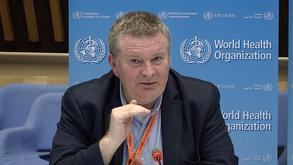 This TV grab taken from the World Health Organization (WHO) website shows WHO Health Emergencies Programme Director Michael Ryan speaking at a virtual news briefing on COVID-19 from the WHO headquarters in Geneva on March 30, 2020. (PHOTO / AFP)
This TV grab taken from the World Health Organization (WHO) website shows WHO Health Emergencies Programme Director Michael Ryan speaking at a virtual news briefing on COVID-19 from the WHO headquarters in Geneva on March 30, 2020. (PHOTO / AFP)
GENEVA - Although the first clusters of atypical pneumonia were reported in Wuhan, China, it did not necessarily mean that was where the COVID-19 disease jumped from animals to humans, a senior World Health Organization (WHO) expert said on Monday.
Dr. Michael Ryan, executive director of the WHO Health Emergencies Programme, said that a more "extensive retrospective epidemiological study" should be taken to fully understand the link between the cases
Dr. Michael Ryan, executive director of the WHO Health Emergencies Programme, said at a routine COVID-19 briefing on Monday that a more "extensive retrospective epidemiological study" should be taken to fully understand the link between the cases.
ALSO READ: China backs WHO probe into virus origin
He stressed the need to begin studies on the first reported human clusters in order to systematically look for the "first signal at which the animal-human species barrier was crossed," before moving on to studies on the animal side.
The WHO advance team that traveled to China in preparation for an international mission of identifying the zoonotic source of COVID-19 has concluded its mission recently, according to the WHO expert. Future studies will be built on the initial investigations done by Chinese experts around the Wuhan seafood market.
READ MORE: WHO chief says advance team to China concluded their mission
Ryan also noted that the WHO was moving forward with agreeing on the international team and ensuring that right expertise would be in place to work with the Chinese counterparts to design and implement further studies.


